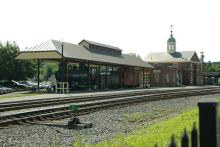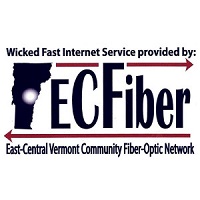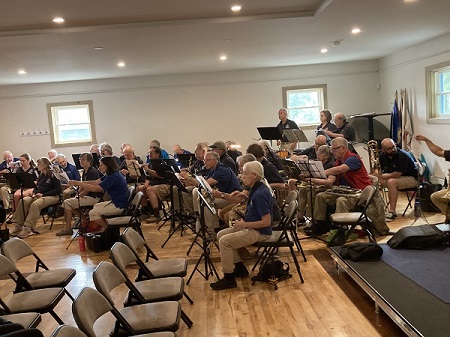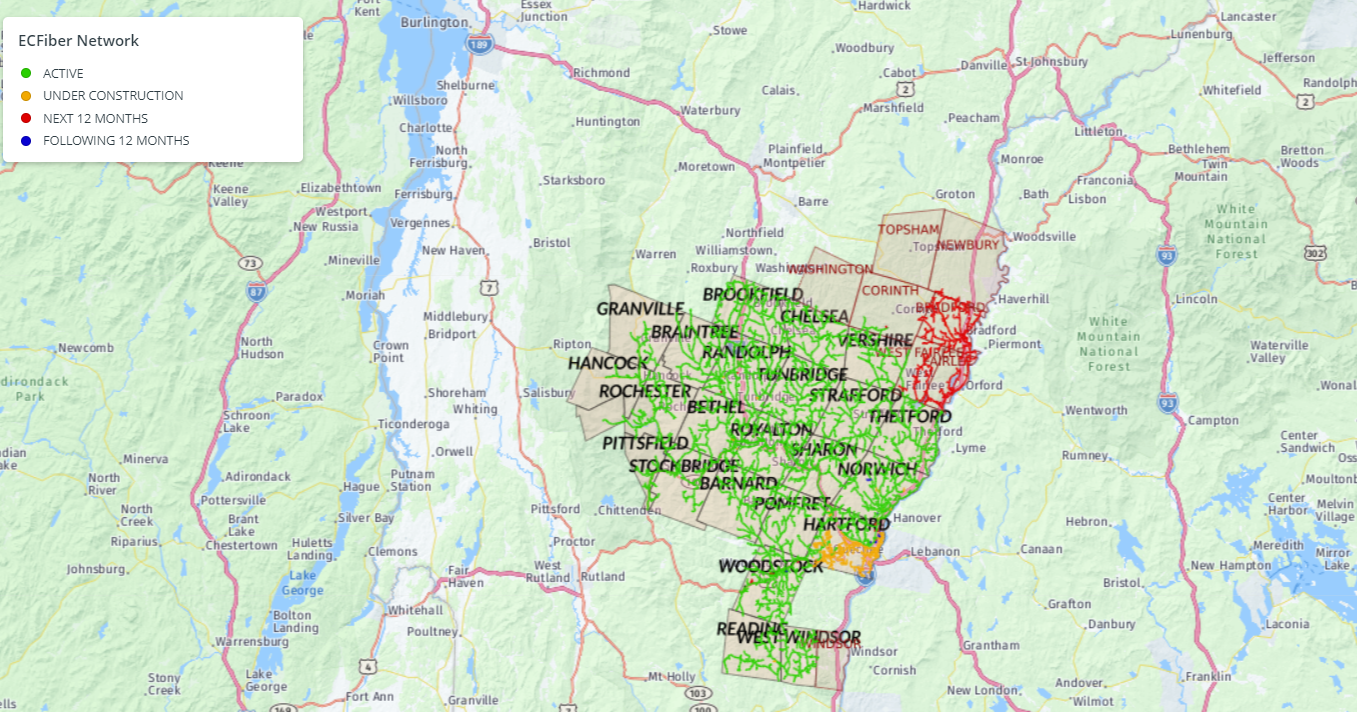
Fast, affordable Internet access for all.

It was a big week for ECFiber as Vermont’s first – and oldest – Communication Union District (CUD) celebrated lighting up the last hub of its 1,500 mile-network in White River Junction.
To mark the occasion of connecting the “golden patch cord” that will extend high-speed Internet service to eight more communities in the Upper Valley region, White River Junction’s VFW Hall was packed this past Tuesday with CUD officials, local and state leaders, enthusiastic residents, and U.S. Sen. Peter Welch. They were there to celebrate what ECFiber officials liken to “the Golden Spike moment tying the first transcontinental railroad together.”

After a 30-piece band played marching tunes, ECFiber Chairman F.X. Flinn marched to the podium to describe the meaning of the moment.
"It’s come to fruition today with a lighting of the White River Junction hub," he said. "This is the last piece of the puzzle for the network we originally envisioned that would bring world-class broadband to every home and business in the 23 member towns that originally voted town meeting day 2008 to create ECFiber."
Sen. Welch, an ECFiber subscriber who also spoke at the event, credited the state’s community broadband approach as the linchpin to solving the state’s digital divide:
“If we in rural Vermont were going to depend on the big telecommunication companies to wire our homes and get us Internet, we’d be waiting until our grandchildren had grandchildren. It wasn’t going to happen.”
Eight More Towns Join CUD
First established in 2007, ECFiber currently serves 8,000 subscribers across 23 towns. But now, with a $2.8 million “pre-construction” grant (funded by American Rescue Plan money) administered by the Vermont Community Broadband Fund (VCBF) – and with an operating agreement with GWI, a Maine telecommunications company – ECFiber is ready to extend its existing network to eight more towns who joined the CUD in 2021: Bradford, Fairlee, West Fairlee, Newbury, Corinth, Topsham, Washington, and Windsor.

The VCBF grant, Flinn said, will pay for the network design work in Bradford, Fairlee, West Fairlee and Newbury.
Meanwhile, Flinn told Valley News they are putting together the “final paperwork” to apply for another $13 million VCBF construction grant to pay for about half of the construction costs – a grant ECFiber hopes will be approved in August.
To pay for the rest of the estimated $30 million build-out, Flinn added, ECFiber will go to the bond market to finance the other $15 million.
Ultimately, Flinn expects about 20 percent of the construction costs to be funded by grants with the rest financed by bonds.
“We’ll pay off those bonds over the course of a generation … It will just take a while to get there,” Flinn said.
Once the network has been extended to the eight towns who most recently joined the CUD, ECFiber expects to add 10,000 new passings.
Current subscribers have a range of choices for service tier plans: from $72/month for symmetrical 75 Megabits per second (Mbps) service to a symmetrical gig for $134/month without any data caps. Current subscribers also pay a one-time installation charge of $99. (As we’ve noted in previous stories, while these prices are not in line with the kind of pricing – often symmetrical gigabit for $70 – seen in more urban, competitive markets, it remains a game-changer for historically underserved Vermont residents long stuck with aging and expensive DSL, costly and usage-capped satellite–or nothing at all).

ECFiber Example Inspires Rest of State
Sen. Welch characterized the story of ECFiber as being “about folks being committed to their own community. And they cared about making sure everyone had access to high-speed internet. That doesn’t fit the corporate business model.”
It was also noted at the ceremony how ECFiber’s example blazed the trail for the rest of the state to follow, as there are now 10 CUDs across the state who will serve as the primary way every home and business in the Granite State gets broadband.
“I think without our example there wouldn’t be any clear path forward for Vermont to get this done in relatively short order,” Flinn told WCAX TV.
Or as explained in more detail in a recent press statement:
“ECFiber's plans were felt to be unworkable by most state legislators and administrators and we were largely ignored until 2019, when we asked for changes in pole attachment rules because of delays that were preventing us from building out as fast as we wanted. During testimony, legislators suddenly realized we were actually accomplishing in our rural towns what they wanted for the whole state. They quickly agreed to our attachment changes, but then went further and created mechanisms and funding to spur creation of CUDs like ECFiber around the state.”
This latest development comes as other CUDs, established over the last several years, are building out fiber networks in other parts of the state. As we recently reported, the United States Department of Agriculture (USDA) awarded a $17.5 million grant to NEK Community Broadband to bring fiber service to 3,295 homes, 94 businesses, 183 farms and 11 educational facilities across 22 towns in Orleans, Caledonia, and Essex counties in Vermont.
The other CUDs are marching full steam ahead, and we expect to see thousands of households connected to new, community-owned infrastructure over the next handful of years - making Vermont a leader in publicly owned broadband infrastructure, buoyed by an additional $229 million the state will get from the BEAD program that was announced by the President and the National Telecommunications and Information Administration (NTIA) earlier this week.
Header image of White River Junction Amtrak station courtesy of Wikimedia Commons, Attribution-ShareAlike 2.0 Generic (CC BY-SA 2.0)
Inline images couresty of ECFiber
